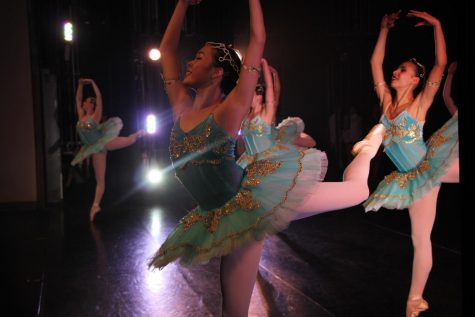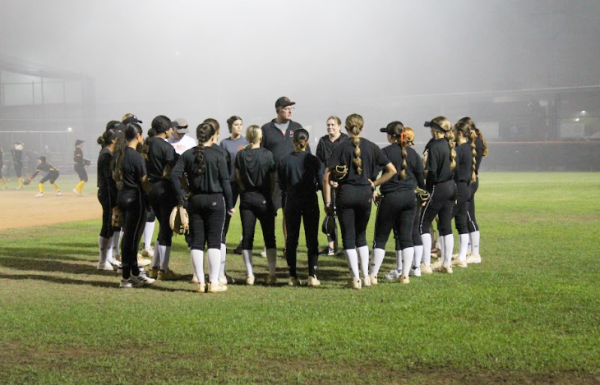Why Dance is a Sport
“…my name is…” Choreographed by Marie Hoffman and performed by APA Dance Company. Dancers: Nia Buu, Gabby Lynch, Emily McCready, Sydney Franco
Recently, Insurance Providers’s website compared data derived from the U.S. Bureau of Labor to compile a list of the Top 20 Most Physically Demanding Jobs in the United States. Many spots on the list included professions with extreme physical exertion such as firefighters at #16 and athletes at #3; however, the #1 spot was taken by professional dancers. Scoring a 97.0 on the overall physical demand index, dancers’ flexibility, stamina, and strength all score at 100.0 in their respective indexes and scored an 87.0 in the strength index.
Personally, I have been dancing for my entire life, both competitively and for concert. Fully experienced on just how grueling this profession is, it still completely shocks me how some people still do not take dance seriously. Many claim it is not a “real sport,” or not as demanding and glorious as football or basketball, ignoring the skill, strength, and mental capacity it takes to be a dancer.
The average schedule for a ballerina in a professional company looks something like this: begin class in the morning from around 9 A.M. to 10 A.M., followed by rehearsals for 10 to 12 hours at a time, with minimal break time depending on the company and type of dancer. On show nights, rehearsals are shortened, and performances last well into the night. Ballet can be so grueling that there are usually many ice baths, massages, and physical therapists involved in a dancer’s daily routines.

Excerpts from “La Bayadere” staged by Terri Sellars and performed by APA Ballet Ensemble. Dancers: Amber Lew, Michaela Capulong, Noel Hickey
In my experience, dancers are just as strong as conventional athletes, and perhaps even more so. We regularly work out, developing and strengthening our muscles and stamina. Oftentimes, I have some type of injury after a long rehearsal, making tape and band-aids for my feet a staple. During shows we stay at the theater late into the night in the week leading up to the opening night, running our pieces over and over in the new space of the stage. It is exhausting and painful, but we all love it at the same time. Moreover, dance is so difficult in its own way because it involves an entirely separate category than any other sport, presentation. In conventional sports, athletes perform feats of strength and endurance, but for the most part, the way they look doing it doesn’t matter. Dance cannot look hard. We move our bodies in ways the human body does not naturally move in, yet we must not make it appear this way.
What sets dance apart and makes it so unique in the sports world is that it is the only athletic activity that is also an art form. Dancers are both athletes and artists, which calls for a very strong mentality towards your movement and physical abilities; one entity of linked thought and movement when you perform. The jobs of dancers are not only to demonstrate intense athleticism, but to make the audience think and feel. What is being said in the choreography? What is the meaning behind the movement?
The dictionary defines a sport as “an athletic activity requiring skill or physical prowess and often of a competitive nature.” Professional dance requires just as much diligence, physical strength, mental fortitude, and practice time as any other conventional sport, if not more.
Perhaps dance is not a sport. It is so much more than just something that can be labeled. One thing is for certain: no other sport has the capacity to tell a story of love and hate, to move an audience and change them thereafter.

“Equal and Opposite” choreographed by Marie Hoffman and performed by APA Repertory Ensemble. Dancers: Jessie Hernandez, Devin Adamson, Madison Lynch
Your donation will support the student journalists of Huntington Beach High School. Your contribution will allow us to cover our annual website hosting costs.
Thank you for supporting our program!







